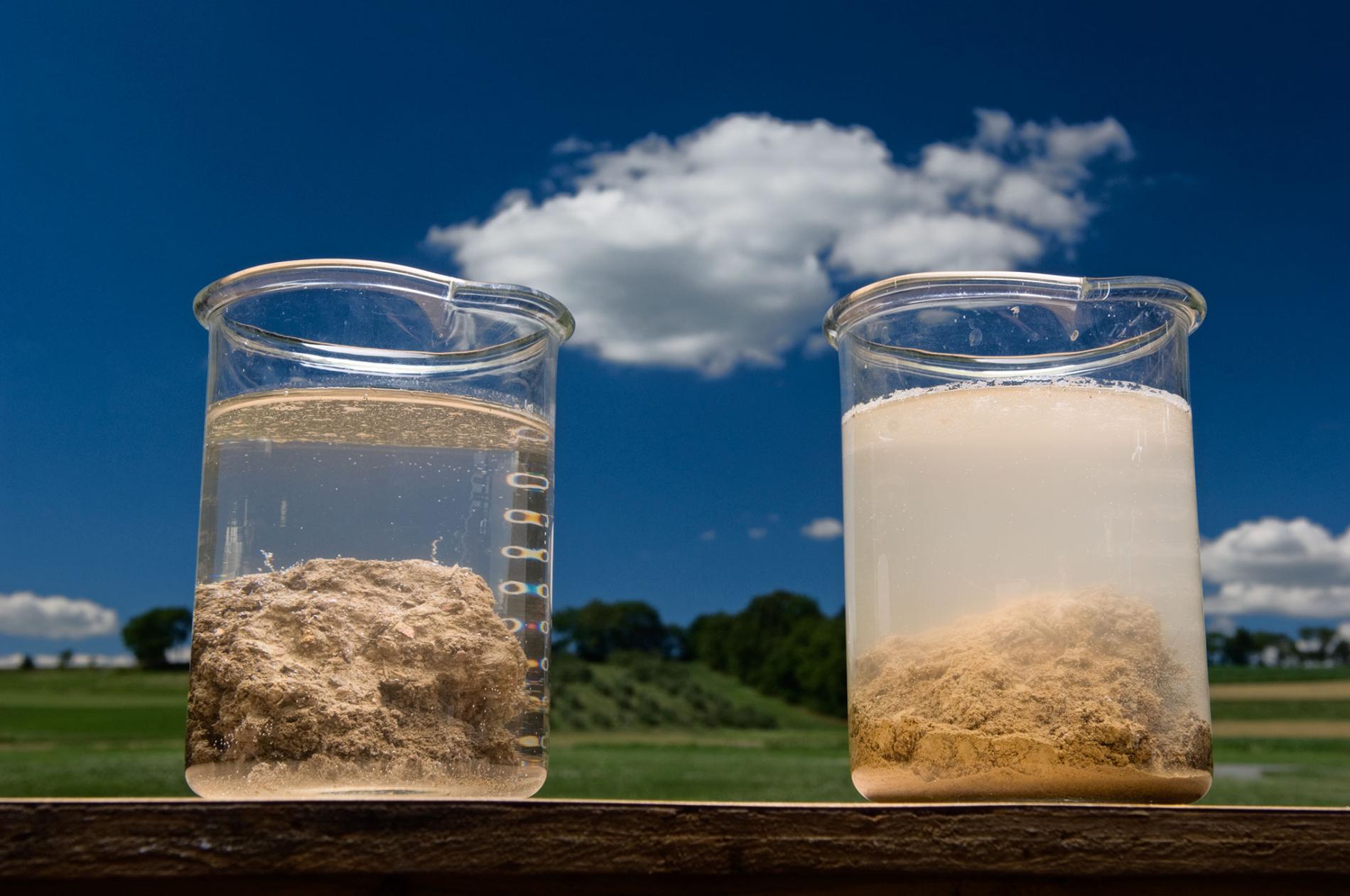bringing it all together:
soil health

what is soil health?
soil health is the capacity of soil to function as a vital, living ecosystem that sustains plants, animals, and humans. while many soil properties are inherent and can't change on a human time scale (i.e. texture), others are dynamic and are directly influenced by management (i.e structure, organic matter).
soil health lies at the intersection of the biological, chemical, and physical state of the soil
just like our organs perform vital functions that keep us healthy, healthy soil performs important functions that promote a healthy environment!
just like the genetic material we inherit from our parents, soils inherit properties from their parent material that can't be changed (i.e. texture, mineralogy), but just like diet and exercise have the power to modify our DNA and promote overall health, the way we manage soil has a major impact on soil health!
in sandy soils, increasing soil organic matter (SOM) helps particles stick together together, improving soil structure. in clayey soils, SOM helps open up the soil, creating more pore space. while many conservation practices improve soil structure, the ability to build and store SOM may be limited in some soils or climates.
in order to build SOM, microbes must store more of the carbon they consume in their biomass than they respire as CO2. this requires a healthy living environment (good structure!) that optimizes their health and overall efficiency.
principles of soil health
keep it active and well-fed!
keep it balanced!
healthy soil has room to breathe
about half of the soil's volume should consist of open pore space, allowing air and water to flow freely.
an ideal breakdown would include:
keep it hydrated!
healthy soil carries weight.
soil organic matter holds approximately 10 times its weight in water.
for every 1% increase in soil organic matter, a soil can hold upto 1 extra inch -- or 20,000 extra gallons -- of water/acre.
keep it covered!
healthy soil needs full-time coverage.
seeding with a "cocktail mix" of 6-12 different plants provides diversity above-ground, which breeds much needed diversity below-ground. including legumes in your cocktail allows microbes to pull nitrogen out of the atmosphere and into the soil -- free fertilizer for your cash crop.
managing for soil health
measuring soil health
soil testing helps land managers evaluate the health of their systems. traditional lab tests focus on soil chemical properties, while soil health tests include physical and biological properties, as well.
soils at risk
a soccer field of soil is eroded every 5 seconds, an area the size of new york is sealed up every day, and 33% of the world's soils are considered moderately to highly degraded. this poses an existential threat -- to our food supply and the global economy. by working together to improve soil health, we can provide solutions to these global challenges.





